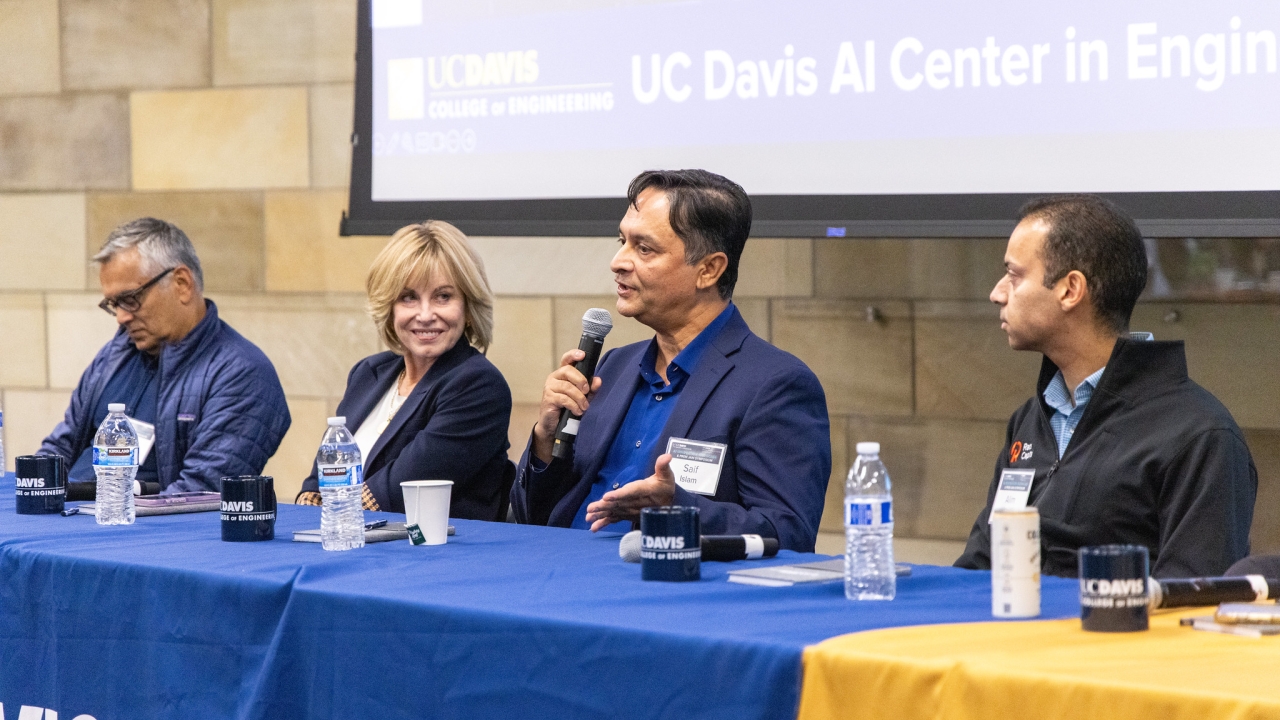
The Power of Nighttime Solar
By Kristina Batchelor
When you think of solar power one of the first images that comes to your mind is most likely a bright sun shining down on a group of black cells on your neighbors’ rooftops. You think of the power of the sun saving you money during the day, but probably not saving you much once it sets. What if there was a way to run your house on solar power all day long, even at night? Electrical and computer engineering professor, Jeremy Munday, and his team are working to develop photovoltaic cells that can do just that.
More than 100 U.S. cities have committed to using 100% clean, renewable electricity by 2050, and solar energy is expected to help supply the needed additional power. Current conventional photovoltaic cells only generate electricity during daylight, which leads to the need for costly batteries and fossil fuels to provide power at night. So, what’s the secret to the Munday Lab’s nighttime photovoltaic cells? Two words: deep space.
An object that is hot compared to its surroundings will radiate heat as infrared light. A conventional solar cell is cool compared to the sun, so it absorbs light. Conventional photovoltaic cells are powered by the hot-cold dynamic of a hot sun reacting to a comparatively cool cell. Thermoradiative photovoltaics involve heating up the solar cell, which then becomes the hot object, and pointing it at a cool object – the night sky. Space has an average temperature of 3 Kelvin (roughly minus 455 degrees Fahrenheit), so if you point a warm object at the night sky, it will radiate heat toward it.
In order to have effective radiative cooling, three key factors must be present: The ability to transmit or reflect solar illumination to avoid heating; thermal isolation from the environment to limit additional conductive and convective heat exchanges with the surroundings; and the ability to emit wavelengths that fall within the atmospheric transparency window to enable radiative heat transfer to deep space.
“A regular solar cell generates power by absorbing sunlight, which causes a voltage to appear across the device and for current to flow. In these new devices, light is instead emitted and the current and voltage go in the opposite direction, but you still generate power,” Munday said. “You have to use different materials, but the physics is the same.”
Radiative Cooling and Climate Change
Just as the radiative cooling process can be used in solar cells to regulate the temperature of your home at night, these same hot-cold dynamics can also be used to help regulate the temperature of the earth and possibly mitigate climate change.
With the earth warming faster than expected, it’s become clear that a reduction in CO2 emission is needed through an increase in energy efficiency and cleaner power production. Currently, the earth is absorbing more heat than it is emitting, which leads to an overall warming of the climate. Munday believes that increasing the radiative heat emission from the earth can help to counteract this process.
“By covering the earth with a small fraction of thermally emitting materials, the heat flow away from the earth can be increased, and the net radiative flux can be reduced to zero (or even made negative), thus stabilizing (or cooling) the earth.”
If only 1-2% of the earth’s surface were covered by radiatively emitting surfaces, the total global heat flux could be reduced by nearly 1 W/m2, potentially enough to stop the increase of global temperatures.
With this research in the early stages, the Munday Lab is looking into planning a small scale demonstration locally. Mitigating climate change is a tall task and Munday believes that “all options should be on the table.”




